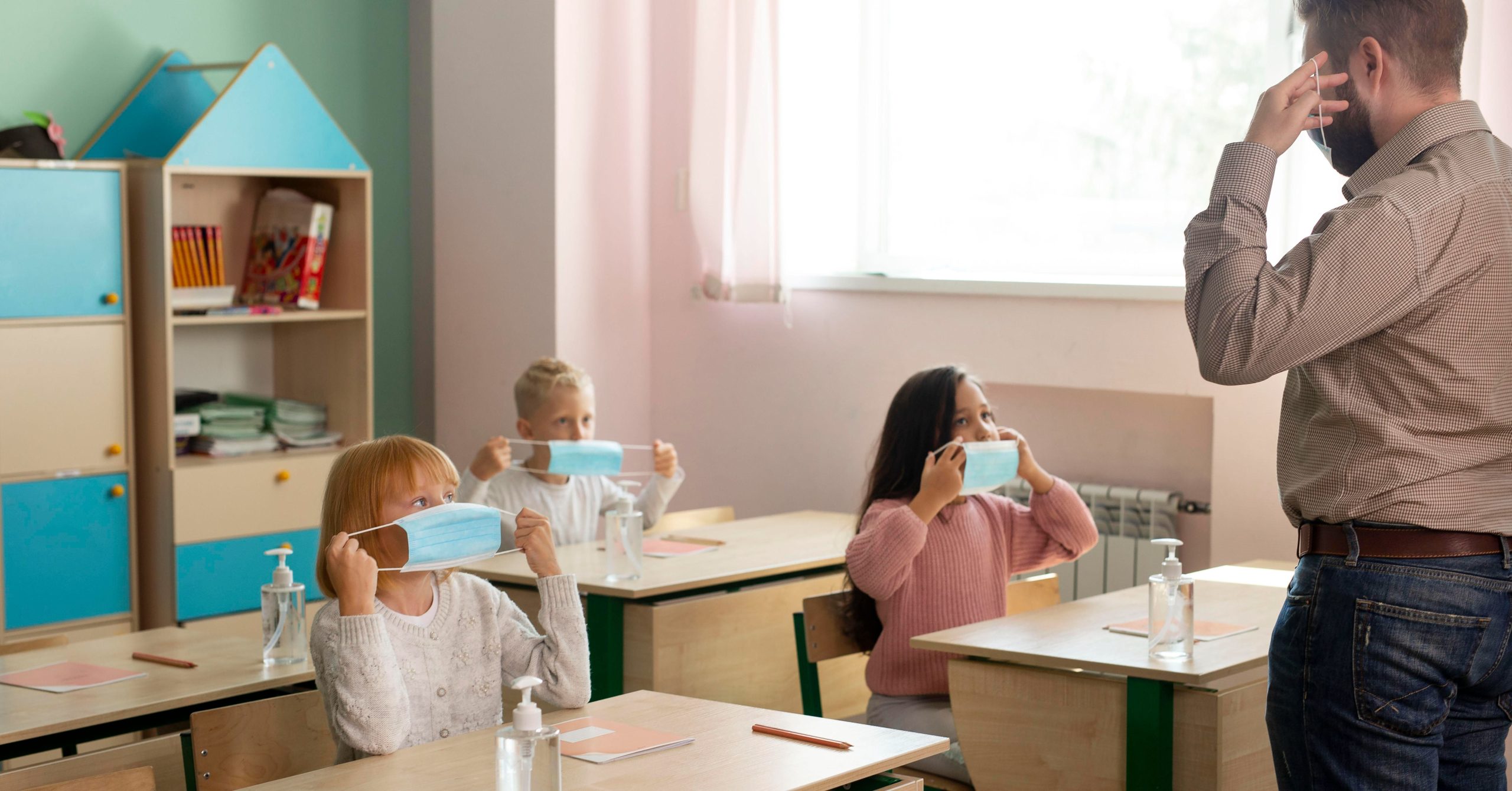
The Hidden Dangers of Being a Preschool Teacher
Working as a preschool teacher is an incredibly rewarding profession. There’s nothing quite like the joy of watching a group of preschoolers learn and grow under your guidance. However, this rewarding job also comes with hidden dangers that may not be immediately apparent to new teachers.
Emotional Hazards
Teaching preschoolers demands emotional resilience due to their developmental stage. Teachers often face burnout from creating a nurturing environment while handling challenging behaviors. Prioritizing self-care and seeking professional support can help manage emotional exhaustion.
Physical Hazards
Preschool teaching involves frequent movement, risking muscle strain and injuries from active preschoolers. Additionally, accidental physical harm and exposure to infectious diseases are common risks. Practicing safe lifting techniques, maintaining proper hygiene, and implementing safety protocols can reduce physical hazards.
Environmental Hazards
Classrooms may contain hazardous materials and unsafe conditions, impacting both teachers and preschoolers. Proper ventilation, lighting, and chemical storage are crucial for safety. Regular safety checks and maintenance ensure classrooms are free from hazards.
Mental Hazards
Difficult situations like child abuse or neglect can lead to chronic stress and anxiety among teachers. Prioritizing mental health support is vital to cope with these challenges. Teachers should prioritize self-care, seek support from colleagues, and establish healthy coping mechanisms.
Interpersonal Relationship Hazards
Managing relationships with parents and preschoolers can be stressful, requiring effective communication and clear boundaries. Establishing clear communication channels with parents can prevent conflicts and misunderstandings.
Technology Hazards
Age-appropriate technology use and cybersecurity practices are essential to mitigate digital risks in preschool education. Setting clear guidelines for technology use can prevent hazards associated with technology.
Physical Strain Hazards
Practicing safe lifting techniques and regular exercise can reduce the physical strain associated with preschool teaching. Engaging in regular exercise and stretching can improve teachers’ strength and flexibility.
Infectious Disease Hazards
Maintaining good hygiene practices and taking precautions are necessary to prevent the spread of infectious diseases in preschool settings. Teachers should encourage preschoolers to frequently wash their hands and take appropriate precautions to stop the transmission of diseases.
Classroom Environment Hazards
Regular safety checks and maintenance ensure classrooms are free from hazards such as poor ventilation or inadequate lighting. Teachers should ensure that the classroom environment is safe and conducive to learning.
Emotional Distress Hazards
Creating a supportive environment and offering emotional support can help mitigate emotional distress among teachers and preschoolers. Teachers should offer emotional support when needed and create a safe and supportive learning environment.
Emergency Hazards
Having emergency plans and conducting drills are crucial to ensure preparedness during emergencies. Teachers should have emergency plans in place and conduct regular drills to ensure that preschoolers and teachers are aware of emergency procedures.
Working Alone Hazards
Establishing communication plans and having necessary resources are essential when working alone. Teachers should ensure that they have a communication plan in place and are equipped with necessary resources such as a phone, radio, or first aid kit.
Discrimination Hazards
Creating a supportive and inclusive work environment is key to mitigating discrimination hazards. Teachers should promote diversity and inclusivity and ensure that the workplace is free from discrimination.
Budget Constraints Hazards
Seeking creative solutions and advocating for increased funding can alleviate budget constraints. Teachers should look for creative ways to provide quality education and care within the given budget and advocate for increased funding for preschool education.
Workload Hazards
Prioritizing tasks and seeking support are essential to manage workload hazards. Teachers should prioritize their workload, delegate tasks when possible, and seek support from colleagues and administration when needed.
Career Progression Hazards
Seeking professional development opportunities can mitigate career progression limitations. Teachers should seek professional development opportunities, expand their skillset, and advocate for increased career progression opportunities within the field.
Work-Life Balance Hazards
Setting boundaries and prioritizing self-care can help maintain a healthy work-life balance. Teachers should prioritize self-care, set boundaries, and communicate their needs to colleagues and administration.
Parental Involvement Hazards
Establishing clear communication channels with parents can prevent conflicts and misunderstandings. Teachers should establish clear boundaries with parents and explain their teaching style and expectations.
Burnout Hazards
Prioritizing self-care and seeking support are essential to prevent burnout among preschool teachers. Teachers should take breaks when they need them, engage in stress-reducing activities, and seek professional support when needed.
Mental Health Hazards
Prioritizing mental health support can help teachers cope with stress and anxiety. Teachers should take breaks when needed, engage in stress-reducing activities, and seek professional support when needed.
Allergies Hazards
Being aware of allergies and taking necessary precautions can prevent allergic reactions among preschoolers. Teachers should be aware of preschoolers’ allergies, take necessary precautions such as avoiding allergenic foods, and ensure a clean environment.
Language Barriers Hazards
Seeking support from interpreters and using visual aids can overcome language barriers in communication. Teachers should seek support from colleagues or interpreters, use visual aids and nonverbal communication when possible, and make efforts to learn the language or culture of preschoolers and their families.
Transportation Hazards
Following safety protocols during transportation can prevent accidents and injuries. Teachers should follow proper safety protocols, ensure that preschoolers are properly secured during transportation, and avoid driving in extreme weather conditions when possible.
Food Safety Hazards
Supervising meal times and following food safety protocols are essential to prevent foodborne illnesses. Teachers should supervise meal times, follow proper food safety protocols, and ensure that preschoolers are properly supervised during meal times.
Animal Contact Hazards
Ensuring proper supervision and educating preschoolers on animal safety can prevent accidents. Teachers should ensure that animals are properly supervised and handled, educate preschoolers on animal safety and behavior, and avoid contact with aggressive or dangerous animals.
Natural Disasters Hazards
Having emergency plans and effective communication strategies are crucial during natural disasters. Teachers should have emergency plans in place, conduct regular drills, ensure that the classroom is equipped with emergency supplies, and communicate with families and administration during and after a natural disaster.


